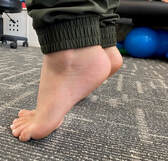 Standing and balancing on tip toes is a skill that requires strength and balance. Typically developing children should achieve this skill around 2 years old. However, consistent tip toe walking can become a problem if it is child’s primary gait pattern. If your child is walking up on their tip toes more than 60% of the time at home and has been walking for more than 3 months, it is recommended that they be evaluated by a physical therapist to determine to root of the problem and begin working towards a more typical gait pattern. What are some reasons a child might toe walk?
If my child continues to toe walk, what will happen? If toe walking is not addressed early on, it can lead to problems with muscles and gross motor development down the road. The primary problems that arise from prolonged toe walking include, shortened heel cord and significant tightness of calf muscles (primarily gastrocnemius), weak hips, ankles and feet, decreased stability and balance, and difficulty/delayed achievement of higher-level gross motor skills. What is the next step if my child is demonstrating this gait pattern? Schedule and evaluation with a skilled pediatric physical therapist to begin an individualized therapy plan and home program in order to address the root of the problem and work towards a more optimal gait pattern! In the meantime, … Is there something to be working on at home? It is important to be evaluated by a skilled, pediatric PT to determine the root of the problem and begin an appropriate, individualized treatment plan. However, here are 3 simple exercises which can be practiced at home that can begin to address some common deficits found in toe walkers and are helpful for strength and development in all children!
1 Comment
Does your child tend to avoid activities that are challenging for them or fall down more often that their peers? Do they avoid moving slowly or staying still for more than a few seconds at a time? If so, these may be signs that they lack the appropriate strength and the ability to utilize effective balance strategies to stabilize themselves throughout the day. There are three primary balance strategies that we use when navigating our environments. The first strategy begins at the ankles. When an individual faces a small balance perturbation the first muscles to kick in to save them from falling are all the muscles that surround the ankles. If the perturbation is too large for the ankle muscles to return the individual to equilibrium, then the body will automatically utilize the hip muscles to regain balance. Finally, if the hips are unable to respond adequately enough to achieve balance, the final strategy that our body’s will use to prevent a fall is a stepping reaction. Each of these individual reactions should happen quickly and without consciously planning them out. However, for some kiddos these reactions may be delayed or the muscles around the hips and ankles may be too weak to effectively prevent a loss of balance. Here are some of our favorite interventions to help kiddos strengthen the muscles they need to maintain balance and improve the speed and effectiveness of these balance reactions! 1. Half Kneel Position: Progressions: add a pillow under back knee and/or front foot, throw/catch a ball or bounce a balloon back and forth Modifications: hold onto a wall or support surface for stability Can you spot the difference in the images above? In the left picture, the knee is aligned directly above the ankle whereas in the right picture (without arm support) the knee collapses to the inside of the ankle. This is a classic sign of a weak outer hip. When performing this activity, look out for good alignment and be sure your child's strength can support their alignment before progressing to a harder version! 2. Balance Beam Walking: draw a line on the floor with sidewalk chalk or make a balance beam out of pillows or half of a pool noodle at home! Progressions: play red light green light while walking across beam (at red lights stop and pause while balancing for 10 seconds before continuing to walk), add in a cognitive challenge (practice spelling words or playing fun, word games while walking across) Get creative outside! There are lots of balance beams out there... Make a game of finding as many as possible on a walk around the block! 3. Single Leg Standing:
Progressions: stand on a pillow or throw and catch a ball while balancing Modifications: rest lifted foot on a soccer ball, and elevated step, or a foam roller; use something to hold onto (try to let go for 1-2 seconds at a time to start off)
Our goal for this blog is to provide a resource to the community highlighting what we do as physical therapists and to spotlight our patients. We are a therapist owned and operated clinic with the mission of providing well rounded, physical therapy services to the Atlanta community. One major misconception about physical therapists that we want to address in this first post is that all physical therapists do the same thing. Although all PT’s do go through the same 3 years of rigorous, post grad schooling to become general providers, it is common for therapists to choose specific areas of care to pursue after completing their degree. At One Point, we have four clinicians, Collin, Kelvin, Erin and Karleigh who each concentrate in specific aspects of care. Collin and Kelvin are the experts in orthopedic and sports related injuries while Erin and Karleigh primarily work with the pediatric population with emphasis on neurological and developmental diagnoses. Erin also treats women’s health and pelvic floor clients. The goal of One Point is to provide a one stop shop for any and all physical therapy needs in a convenient and comfortable setting. You can feel confident that your care here will be specific to the individual challenges that you are facing and that we will work with you to help you achieve all of your therapeutic goals! |
AuthorsKarleigh Page, PT, DPT Archives
October 2020
Categories |
Copyright © 2015
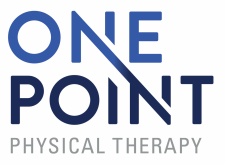
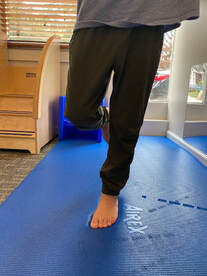
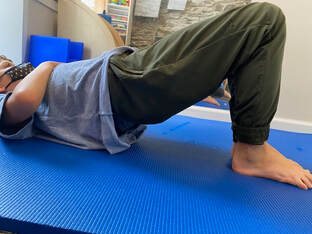
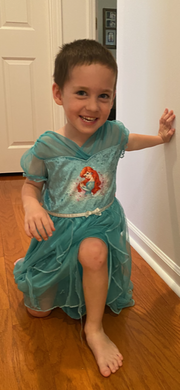
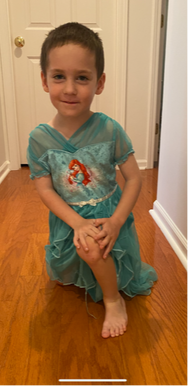
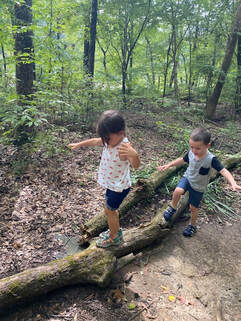
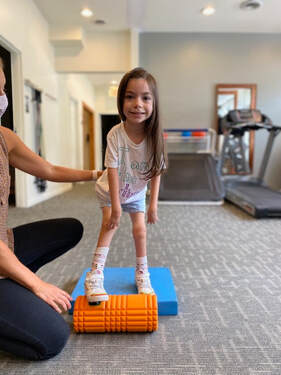
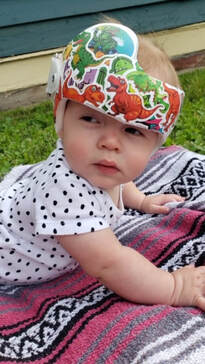
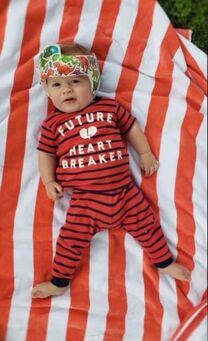
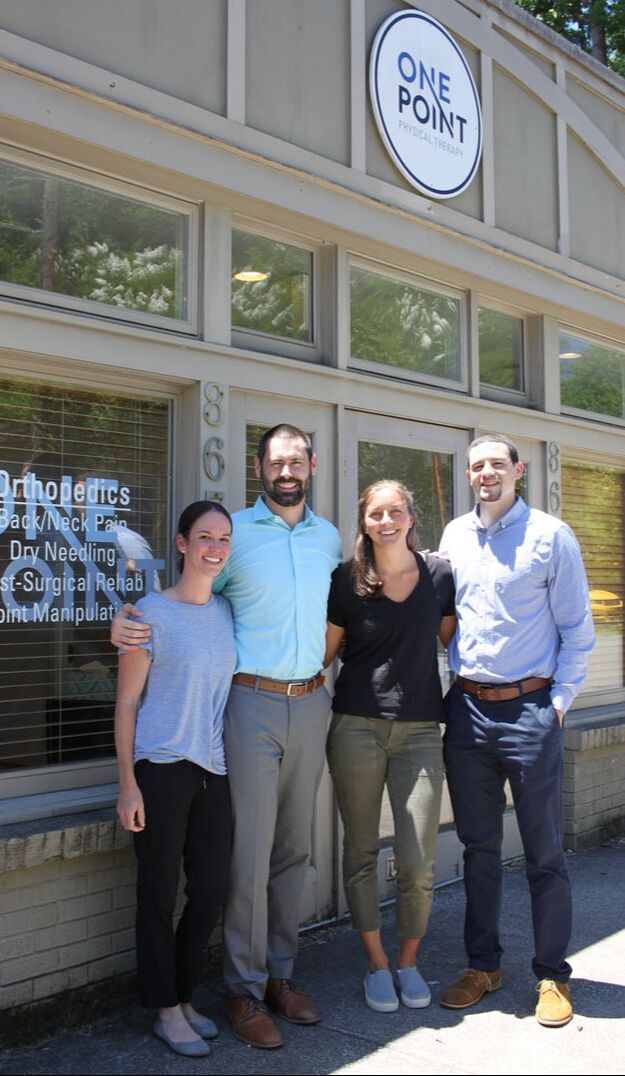
 RSS Feed
RSS Feed